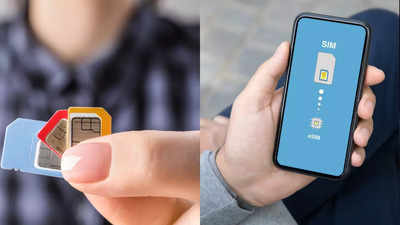- News
- Technology News
- Tech Tips News
- eSIM vs physical SIM: Making the best choice for your needs
Trending
eSIM vs physical SIM: Making the best choice for your needs
Discover the differences between physical SIM cards and eSIM technology to determine the best option for your smartphone needs. Evaluate factors like security, convenience, and device compatibility to make an informed choice.

In today's fast-evolving mobile technology landscape, the type of SIM card you choose can significantly impact your smartphone experience. With the advent of eSIM (embedded SIM) technology, consumers now have a choice beyond the traditional physical SIM cards. This article will guide you through the differences, benefits, and considerations to help you select the right SIM card for your needs.
A physical SIM (Subscriber Identity Module) is a small, removable card that stores your mobile subscriber identity and other related data.Inserted into your device, it connects you to your mobile network, enabling voice, text, and data services.
Drawbacks
An eSIM is a digital SIM card embedded directly into your device's hardware. It can be programmed and reprogrammed remotely by your carrier without needing to swap out a physical card.
Benefits
Drawbacks
Activation and switching
Device compatibility
Security
Space utilisation
Choosing between an eSIM and a physical SIM depends on your specific needs and circumstances.
Opt for physical SIM if:
Opt for eSIM if:
Also read | Upcoming smartphones in July 2024
What is a physical SIM?
A physical SIM (Subscriber Identity Module) is a small, removable card that stores your mobile subscriber identity and other related data.Inserted into your device, it connects you to your mobile network, enabling voice, text, and data services.
Physical SIM card benefits and drawbacks
Benefits
- Ease of use: Physical SIM cards are easy to install and swap between devices.
- Wide compatibility: Compatible with almost all mobile devices.
- Security: Physical SIMs can be removed and stored separately, providing an added layer of security.
Drawbacks
- Physical handling: Prone to damage, loss, or theft.
- Space consumption: Occupies physical space within your device, potentially limiting design innovations.
- Hassle of switching: Changing carriers or plans requires physically removing and replacing the SIM card.
What is an eSIM?
An eSIM is a digital SIM card embedded directly into your device's hardware. It can be programmed and reprogrammed remotely by your carrier without needing to swap out a physical card.
eSIM benefits and drawbacks
Benefits
- Convenience: Easily switch between carriers and plans without needing a new SIM card.
- Space-saving: Frees up physical space within the device, allowing for slimmer designs and potentially more features.
- Remote management: Activate, deactivate, or switch plans remotely without visiting a store or receiving a physical card.
Drawbacks
- Compatibility issues: Not all devices support eSIM technology, limiting its use.
- Security concerns: If your phone is stolen, it might be easier for someone to switch carriers without your physical SIM as a security measure.
- Dependence on technology: Requires a stable internet connection for activation and changes.
eSIM vs physical SIM: A comparison
Activation and switching
- Physical SIM: Requires physically inserting and removing the card. May need carrier intervention.
- eSIM: Can be activated and switched remotely via software, often with a simple QR code scan.
Device compatibility
- Physical SIM: Universally compatible with most mobile devices.
- eSIM: Limited to newer models supporting eSIM technology.
Security
- Physical SIM: Can be removed and stored securely.
- eSIM: Relies on digital security measures, which might be vulnerable to cyber threats.
Space utilisation
- Physical SIM: Takes up space within the device.
- eSIM: Frees up space for other components, potentially enhancing device design and features.
eSIM vs physical SIM: Which one is right for you?
Choosing between an eSIM and a physical SIM depends on your specific needs and circumstances.
Opt for physical SIM if:
- You frequently switch between multiple devices.
- Your device does not support eSIM technology.
- You prefer the security of physically removing your SIM card.
Opt for eSIM if:
- You value convenience and flexibility in switching carriers or plans.
- You have a compatible device that supports eSIM technology.
- You prefer a more seamless, digital approach to mobile connectivity.
Also read | Upcoming smartphones in July 2024
End of Article
FOLLOW US ON SOCIAL MEDIA
